The effects of my calamitous month of #noskincare continues. My skin is dry, uneven textured and feels as if its thickened by unwanted layers of dead cells. Of course, my skin’s condition is made worse by:
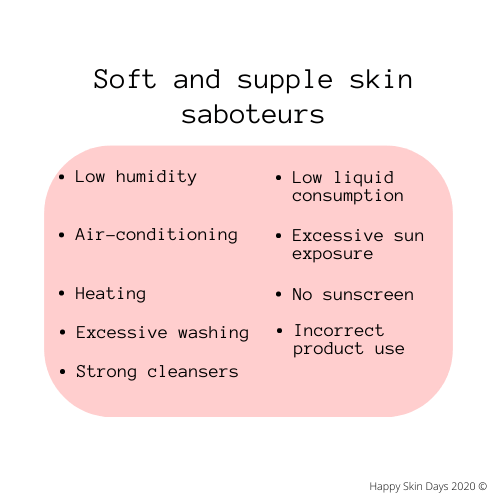
Moisturisers seem to alleviate my skin’s dryness, albeit temporarily. Therefore, today’s blog is a precursor to future blogs on moisturisers. This blog applies to all moisturisers, from Creme de la Mer to Oil of Olay.
1. Skin Barrier and Hydration
The skin has three layers: the Epidermis, Dermis, and Hypodermis. I have only shown the first two layers and the Stratum Corneum (“SC”) (or the skin barrier or the horny layer) in the diagram below.
The SC is the topmost layer of the epidermis (and the skin). It is what is visible.
The skin barrier is organised as flattened corneocytes (keratinocytes with no nuclei) in a lamellar lipid matrix. Desmosomes (protein structures) are responsible for joining corneocytes together.
“Soft and supple” skin has tightly knit corneocytes organised in a flattened manner. For skin to feel “soft and supple,” the typical water content of the Stratum Corneum is 10%-20%. Some argue 15%-20% water content.
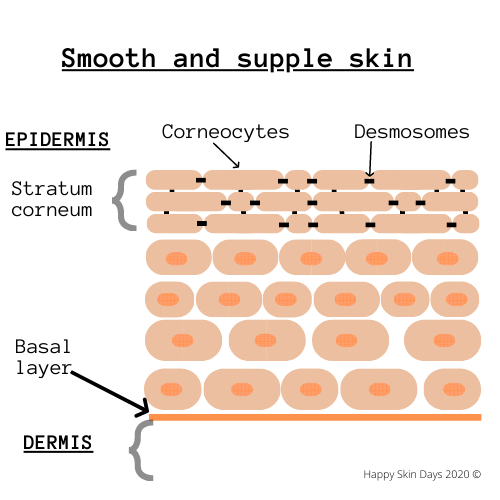
2. Transepidermal Water Loss and Dry Skin
The external environment has much less water than the inside of our bodies, and the osmotic gradient created causes water loss. The fancy name is transepidermal water loss (TEWL).
Ordinarily, the TEWL is replenished by water from lower layers of the skin. But if the water content falls in the SC falls below 10%, then there is excessive water loss. As a result, corneocytes become disorganised and curl up at their ends. Secondly, water is essential to the enzyme protease’s operation, which breaks the protein holding corneocytes. Less protease means more dead cells accumulate on the surface of the skin.
Skin becomes dry, scaly, dull, uneven, and flakes off in chunks.
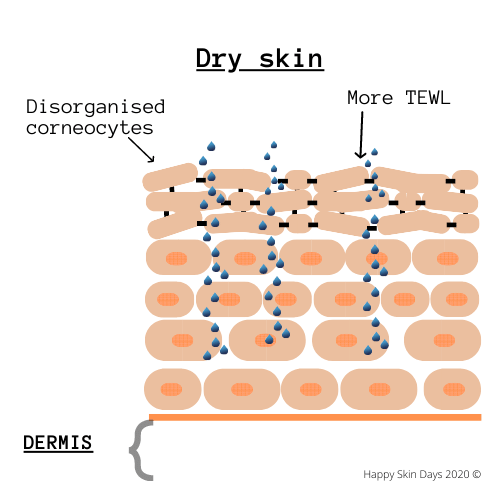
3. Where do moisturizers fit in?
For an inexplicable reason, my settings are American English. When I write moisturizer, I do mean moisturiser. Sorry, literate folk.
Currently, I am using every moisturiser in my cupboard to get rid of the dryness, and this approach is not working. It’s only through this order that my skin will become more hydrated.
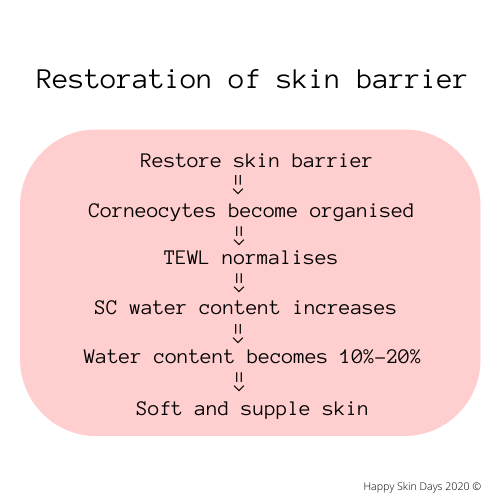
Draelos says the word moisturizer is a misnomer, and she couldn’t be more right. Moisturisers do not add moisture to your skin and instead aim to restore water content through these ingredients and their mechanism of action.
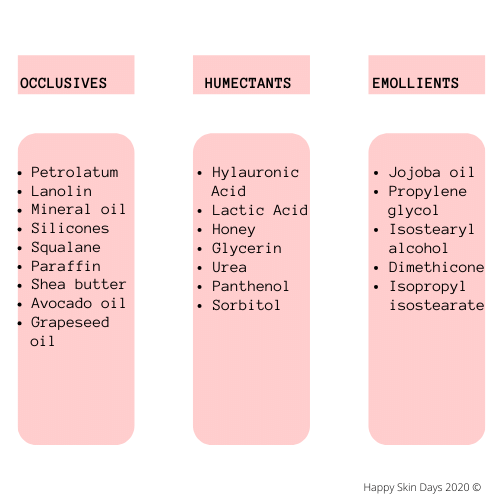
3a. Occlusives
These form a protective barrier, preventing water loss as well as creating conditions for barrier repair. Petrolatum is the best occlusive preventing 99.9% of water loss. Other occlusive ingredients in decreasing order of effectiveness are: Petrolatum> Lanolin > Mineral oil > Silicones
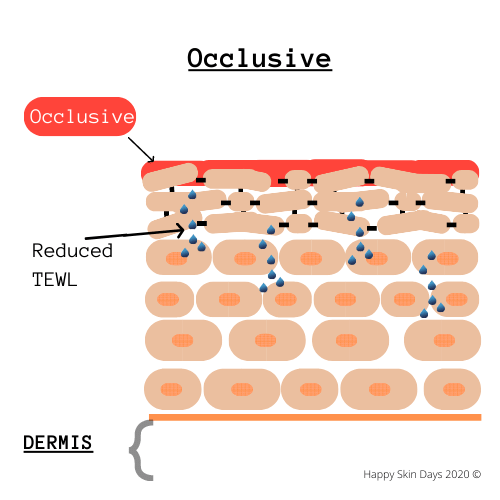
3b. Emollients
Many occlusives are also emollients. Not confusing at all! All emollients will make skin feel soft and smooth by filling in the cracks and gaps between corneocytes. Its a temporary effect and the next time you wash your face, the effects gone.
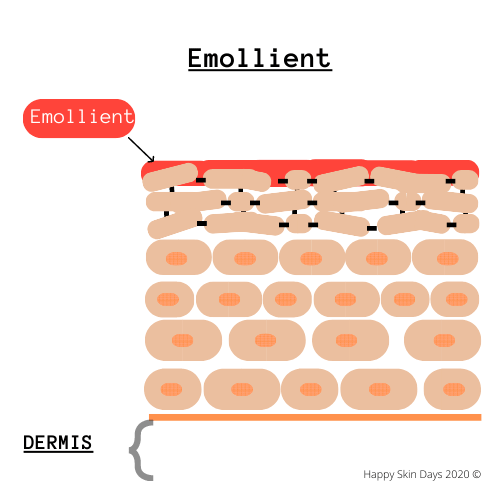
3c. Humectant
A humectant loves water, and it draws water from the lower levels of the SC and if its very humid, the air around your skin. Humectants will hydrogen bond with water and “sit” in the lamellar lipid matrix in the SC. As, humectants draw water from lower levels its invariably coupled with an occlusive in a moisturiser. This is why applying Hylauronic Acid directly to dry skin is never a good idea – all that happens is it draws water from deeper in the skin and makes the skin drier. Therefore, if you have aged and/or dry skin be cautious in using Hylauronic acid.
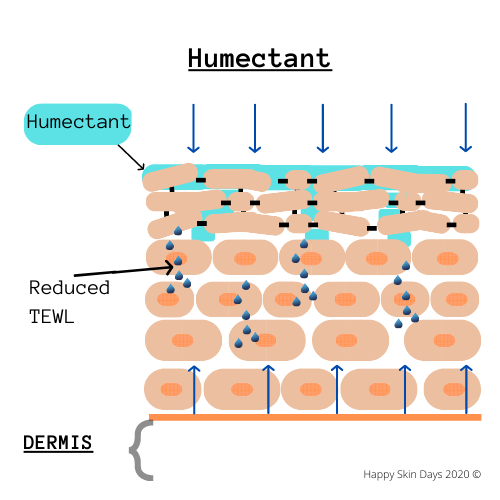
Closing
I hope that was helpful. I am going to build on the basics in this blog and discuss what natural moisturising factors and their role in maintaining skin hydration is in future blogs. If you have any queries leave me comment or drop me a line at email@happyskindays.com
Sources and uses
Moisturizers: Do they work? A Harvard health letter
Draelos, The science behind skin care-moisturisers 2018 J Cosmet Derm 17, 138-144
COPYRIGHT I wish to remind some of you that I am a non-affiliated skincare blogger. I invest my time, money, blood, sweat, and tears in creating content for my blog. My blog is read in multiple countries and according to my lawyers, each of those countries protects my content and rights under copyright law. If you would like to use my content, do the right thing, and write to me at email@happyskindays.com. Don’t be that person who steals content, because it’s arrogant, disrespectful, and ultimately, a crime.
